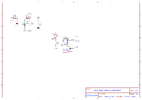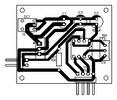skeeterb
Member
I'm working on my circuit for a simple Traffic Signal decoration. It will have a 12 VDC input voltage and will use a PIC12F510 microcontroller. I have already have the circuit schematic drawn and a PCB layout set up. Since the main voltage of the circuit will be 5 volts, what's the best value to have as a pulldown for the switch input to keep the input from floating when there is no power through the input. I can change the value of the pulldown. As a side note I also have a variable resistor connected to the ADC to adjust the timing for the changing lights. What value is a good one for that as well. I have been using 10K as a default value, but I know that might not be the best. What's your opinion guys?



